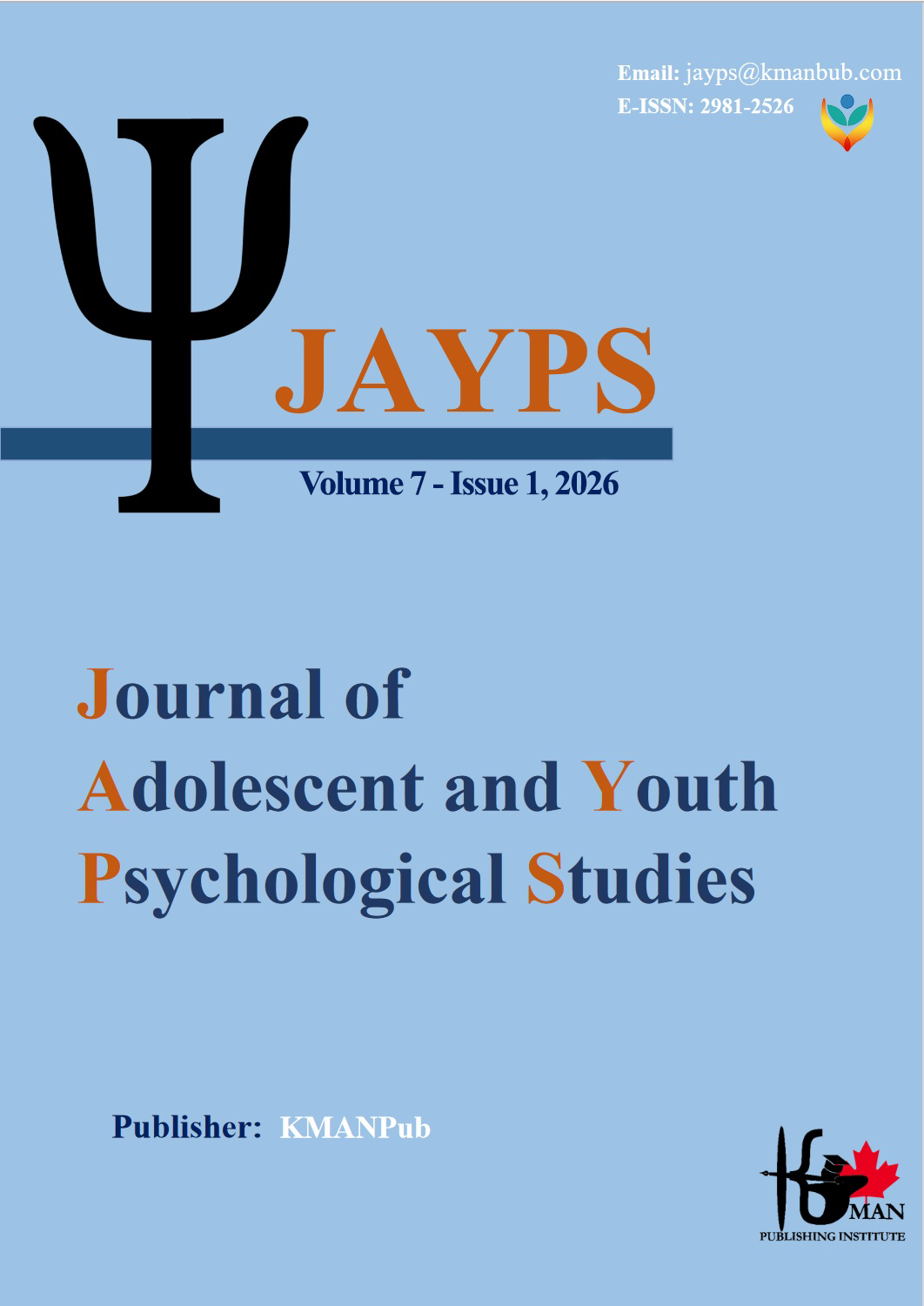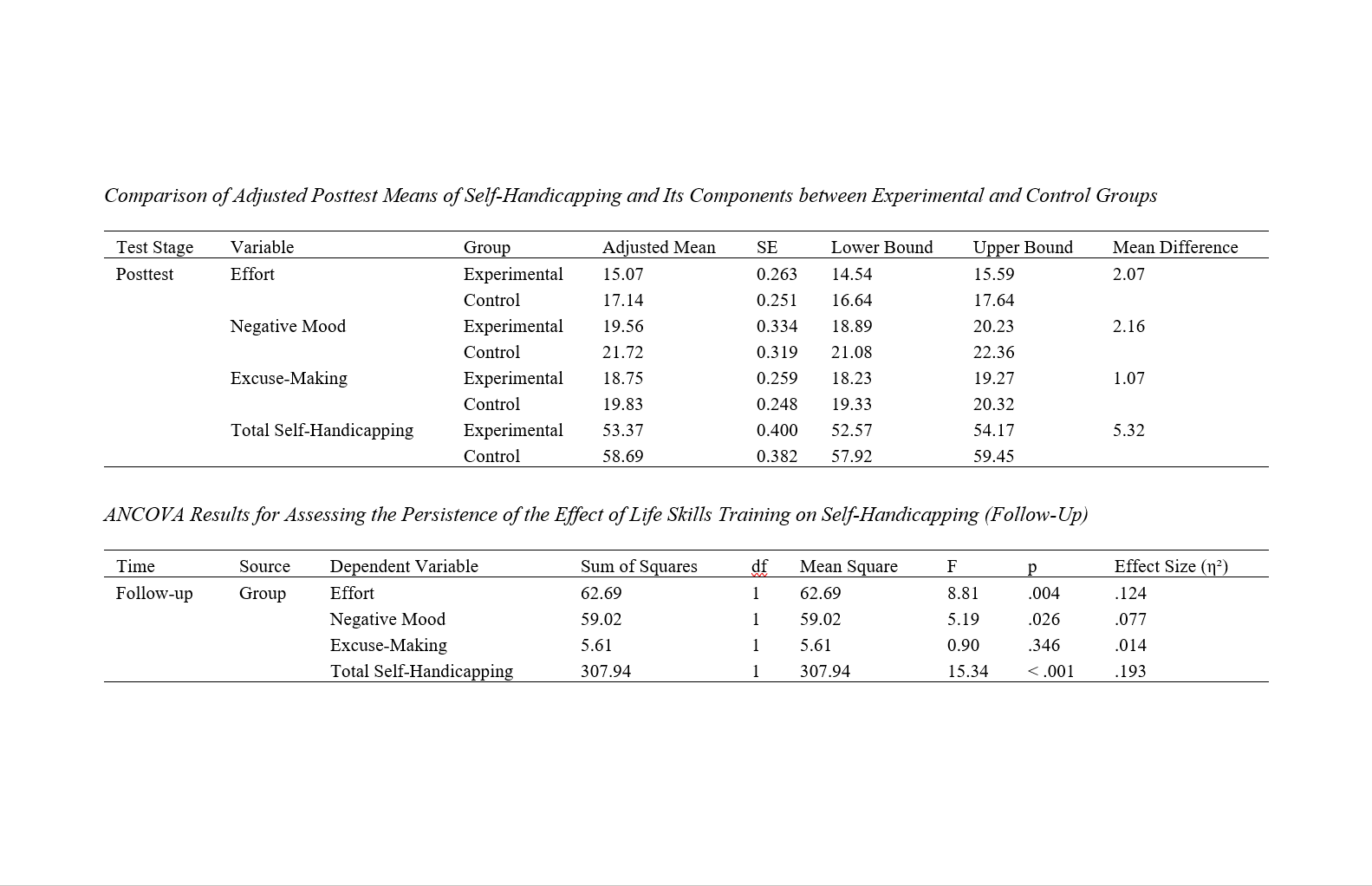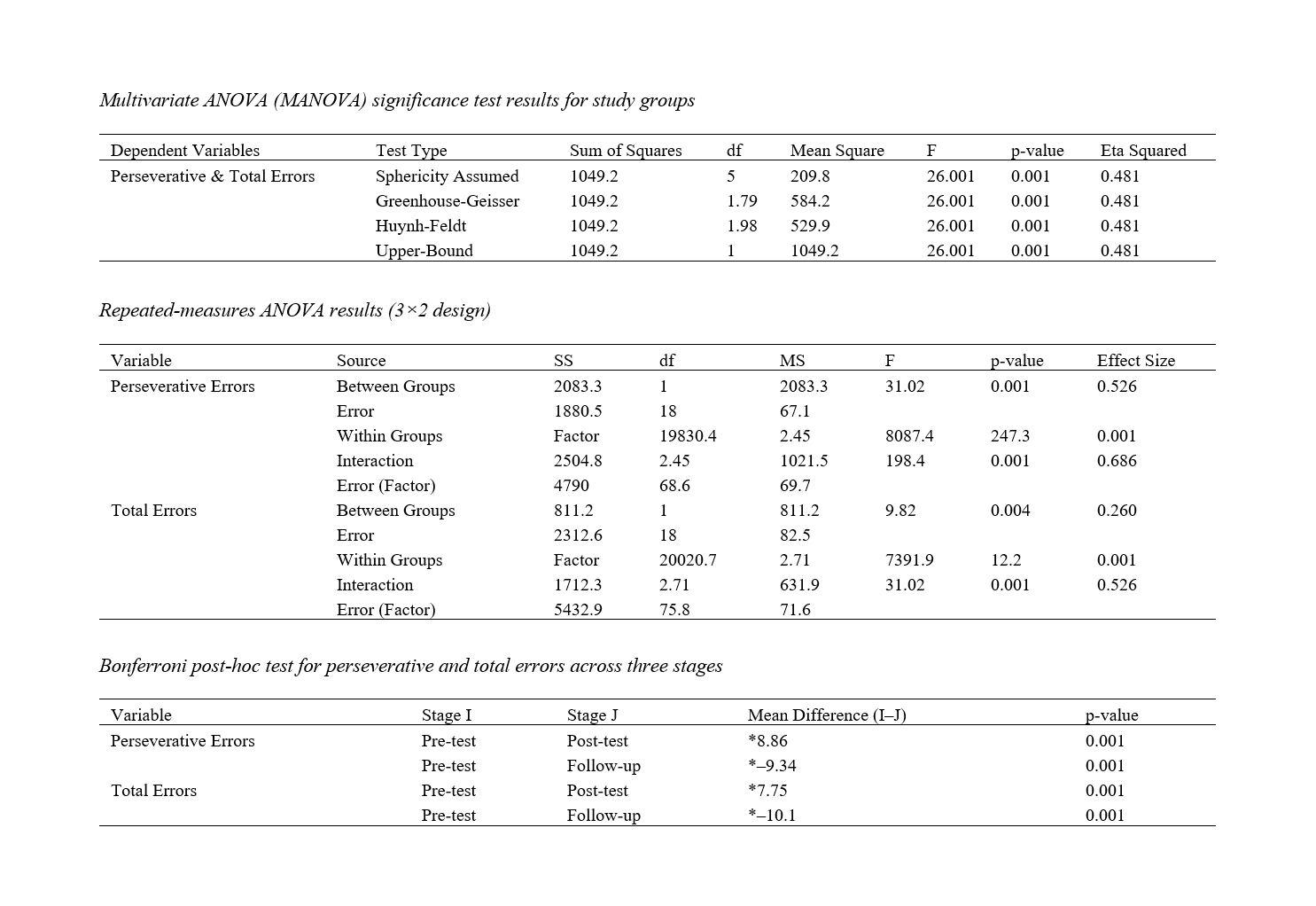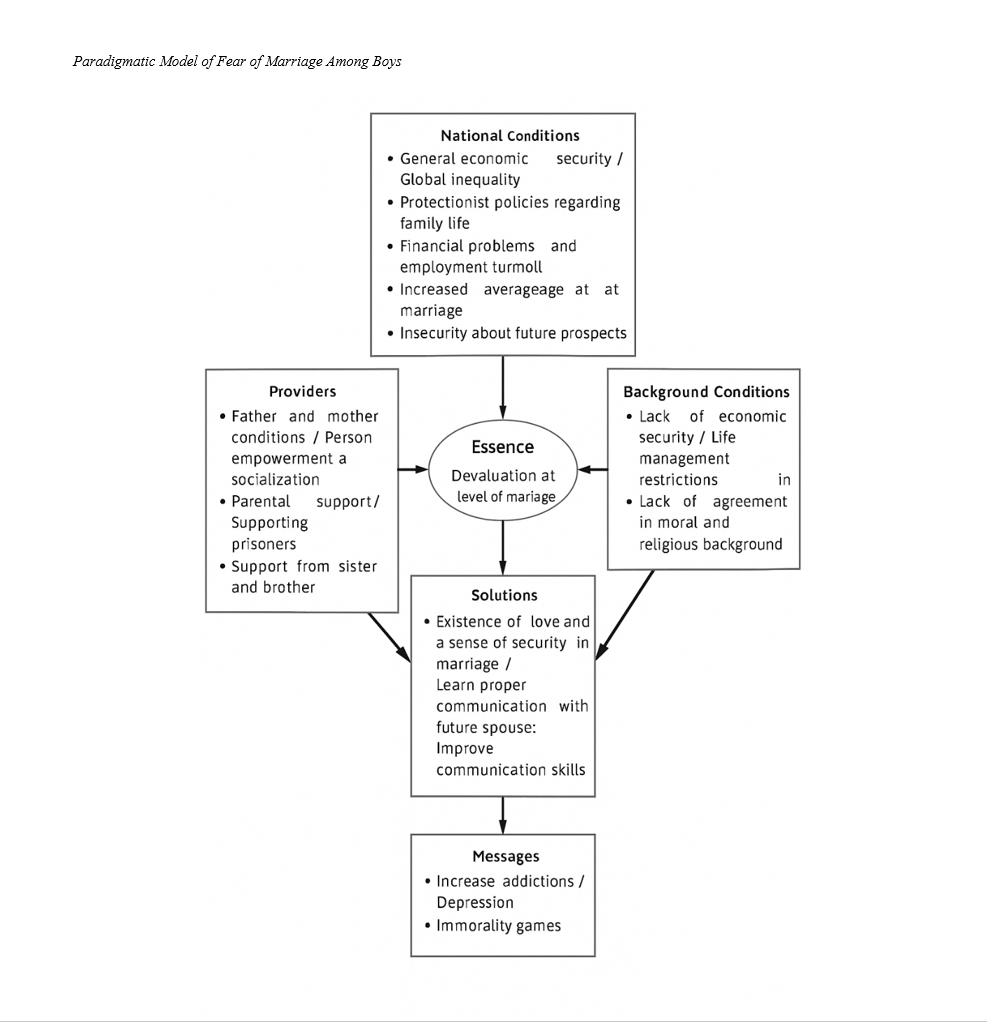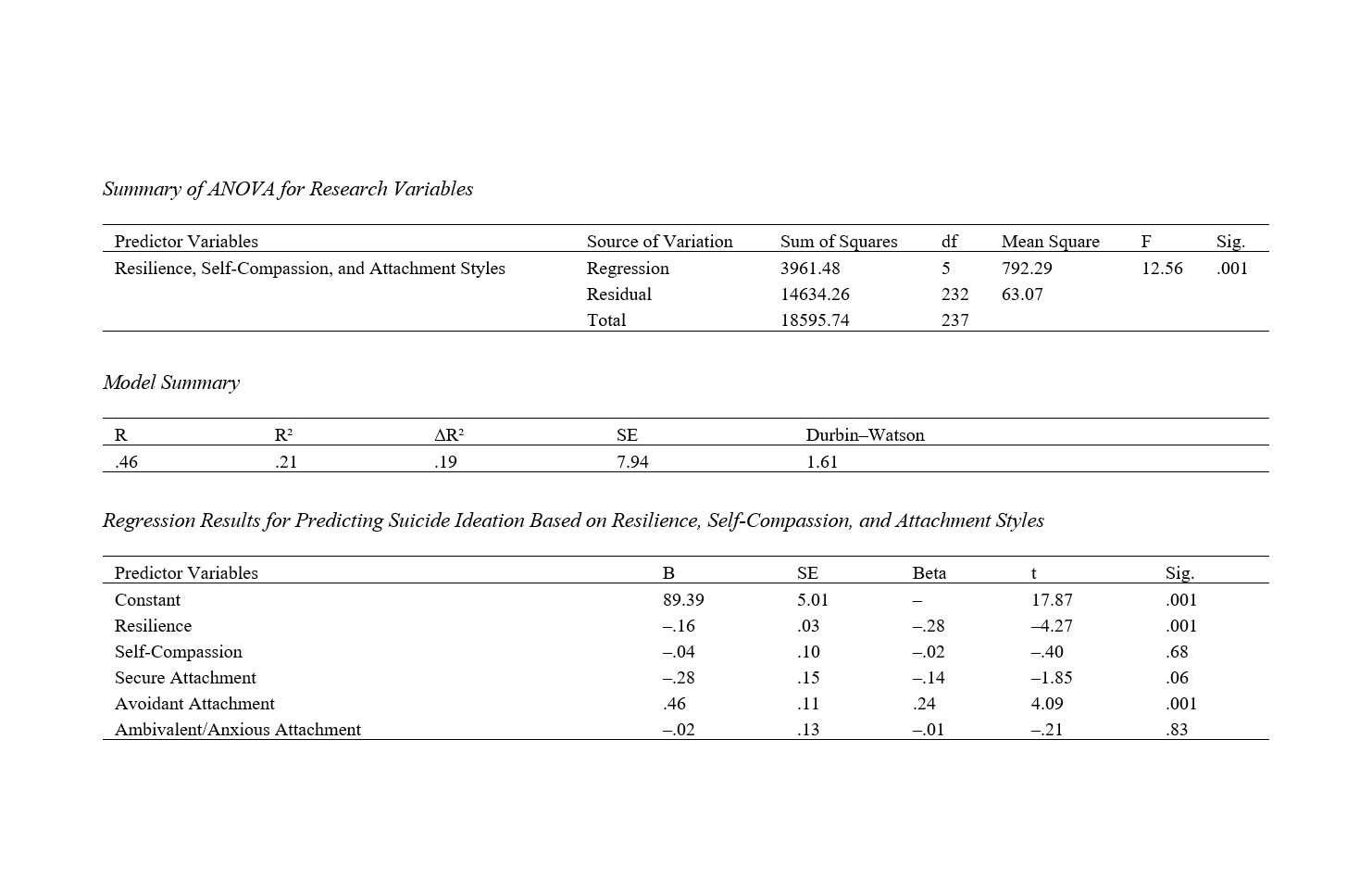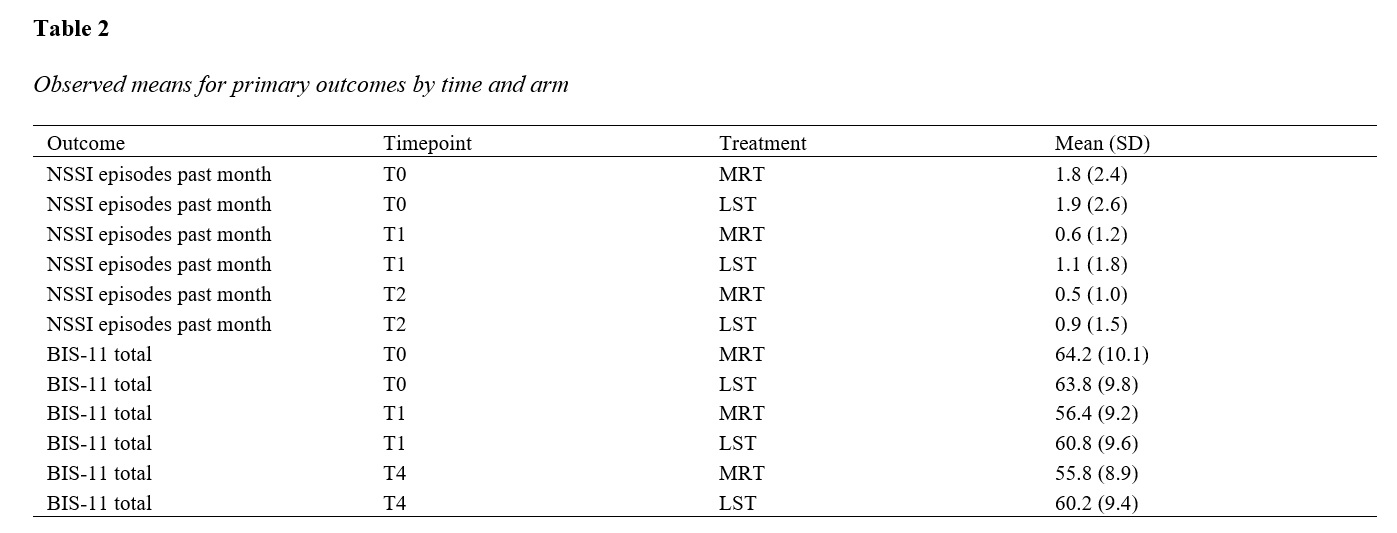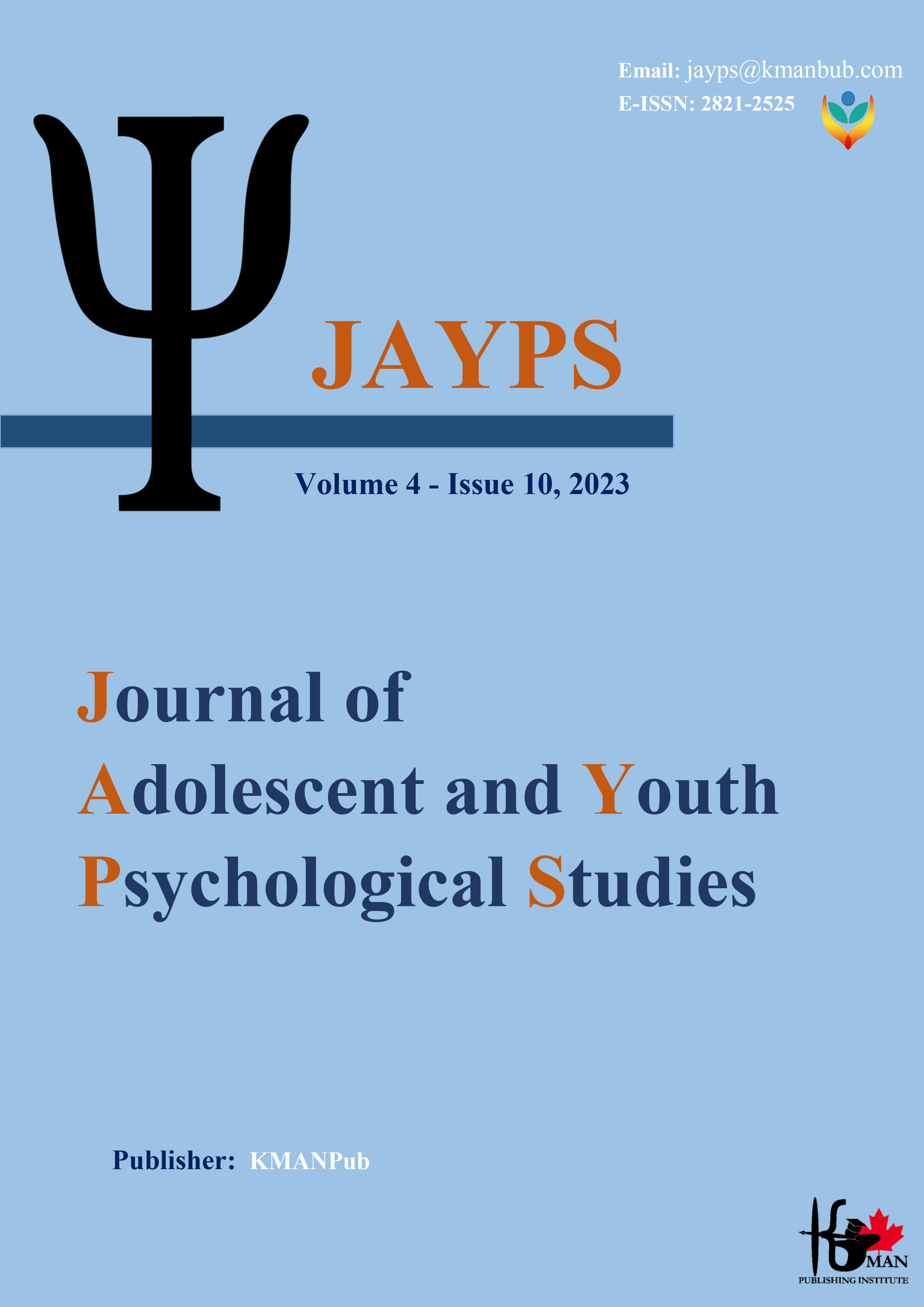Interplay of Cognitive Flexibility and Adaptive Emotion Regulation as Predictors of Academic Success in AI-Enhanced Learning Environments
|
Objective: The objective of this study was to examine the interactive predictive roles of cognitive flexibility and adaptive emotion regulation on academic success among university students learning in artificial intelligence–enhanced educational environments. Methods and Materials: This quantitative cross-sectional correlational study was conducted among 317 undergraduate students from major public universities in Tehran who were enrolled in courses supported by AI-based learning platforms. Participants completed validated questionnaires measuring cognitive flexibility, adaptive emotion regulation, engagement with AI-enhanced learning systems, and academic success. Data were analyzed using descriptive statistics, Pearson correlations, hierarchical multiple regression, and structural equation modeling with SPSS 26 and AMOS 24. Model fit was evaluated using standard goodness-of-fit indices including CFI, TLI, RMSEA, and SRMR. Findings: Hierarchical regression revealed that after controlling for demographic variables and AI-learning engagement, cognitive flexibility (β = .31, p < .001) and adaptive emotion regulation (β = .36, p < .001) significantly predicted academic success, together explaining 56% of the total variance. Structural equation modeling demonstrated strong direct effects of cognitive flexibility (β = .34, p < .001) and adaptive emotion regulation (β = .39, p < .001) on academic success, as well as significant indirect effects mediated through AI-learning engagement (β = .41, p < .001). The overall model exhibited satisfactory fit to the data (CFI = .95, TLI = .94, RMSEA = .061, SRMR = .047). Conclusion: The findings indicate that cognitive flexibility and adaptive emotion regulation are critical psychological determinants of academic success in AI-enhanced learning environments and operate both directly and through strengthening students’ engagement with intelligent educational systems. |
Predicting Adolescent Psychological Well-Being Using Gradient Boosting Models and Multidimensional Life Satisfaction Indicators
|
Objective: The objective of this study was to examine the extent to which adolescent psychological well-being can be accurately predicted using gradient boosting machine learning models integrating multidimensional life satisfaction indicators. Methods and Materials: This cross-sectional study was conducted among secondary school adolescents in Taiwan using a school-based sampling framework. Psychological well-being was assessed as a continuous outcome variable, while multidimensional life satisfaction domains—including emotional health, family life, peer relationships, school experience, academic self-satisfaction, physical health, neighborhood context, and perceived economic status—were used as predictive features alongside key demographic and behavioral covariates. Advanced gradient boosting algorithms were trained and validated using a hold-out testing approach with cross-validated hyperparameter optimization. Model performance was evaluated using inferential predictive metrics, and explainable machine learning techniques were applied to quantify feature contributions and non-linear effects. Findings: Inferential results demonstrated that gradient boosting models explained a substantial proportion of variance in adolescent psychological well-being, with ensemble models achieving high predictive accuracy and low estimation error. Emotional health satisfaction emerged as the strongest predictor, followed by family life satisfaction and school life satisfaction, indicating statistically meaningful and non-linear contributions to well-being. Peer life satisfaction and academic self-satisfaction showed moderate but significant predictive influence, while health-related behaviors such as sleep duration exhibited curvilinear effects. Explainability analyses revealed marked inter-individual heterogeneity in predictor importance, supporting the presence of multiple predictive pathways to psychological well-being rather than a single dominant profile. Conclusion: The findings indicate that adolescent psychological well-being can be robustly predicted using gradient boosting models that integrate multidimensional life satisfaction indicators. |
Identifying High-Risk Profiles for Substance Use in Youth Through Explainable Machine Learning Models
|
Objective: The objective of this study was to identify and interpret high-risk substance use profiles among youth by applying explainable machine learning models that integrate psychological, familial, peer, and sociodemographic factors. Methods and Materials: A cross-sectional study design was employed with a large, community-based sample of adolescents and young adults recruited from educational institutions and youth organizations in Ireland. Participants completed standardized self-report measures assessing substance use behaviors, psychological characteristics, family and peer contexts, and demographic factors. Supervised machine learning models, including regularized logistic regression and ensemble-based algorithms, were trained to classify high-risk substance use status. Model performance was evaluated using cross-validated inferential metrics, including area under the receiver operating characteristic curve, sensitivity, specificity, and balanced accuracy. Explainable artificial intelligence techniques based on SHapley Additive exPlanations were used to interpret both global predictor importance and individual-level risk patterns. Findings: Inferential analyses demonstrated that ensemble machine learning models significantly outperformed linear models in classifying high-risk substance use, with the highest-performing model achieving excellent discrimination and sensitivity. Explainability analyses revealed that peer substance use norms, impulsivity, parental monitoring, sensation seeking, and emotional dysregulation exerted statistically meaningful and nonlinear effects on risk classification. Distinct high-risk profiles were identified, including socially driven risk, emotionally vulnerable risk, sensation-seeking–dominant risk, and structurally disadvantaged risk, each characterized by unique constellations of predictors with differential contributions to model output. Conclusion: The findings indicate that explainable machine learning models can accurately and transparently identify heterogeneous high-risk substance use profiles among youth, offering a robust and interpretable framework for advancing early detection, targeted prevention, and data-informed public health decision-making. |
Machine Learning–Based Prediction of Emotional Eating Patterns in Adolescents Using Psychological and Lifestyle Variables
|
Objective: This study aimed to develop and evaluate explainable machine learning models to predict emotional eating patterns among adolescents by integrating psychological distress indicators and lifestyle-related variables. Methods and Materials: A cross-sectional, school-based study was conducted among adolescents aged 13–18 years in Poland. Participants completed validated self-report measures assessing emotional eating, perceived stress, depressive and anxiety symptoms, emotion regulation difficulties, impulsivity, self-esteem, sleep quality and duration, physical activity, screen time, and dietary habits, alongside sociodemographic information. Data were preprocessed using standardization, imputation, and encoding procedures. Multiple supervised machine learning algorithms, including regularized logistic regression, random forest, gradient boosting, and extreme gradient boosting, were trained and evaluated using nested cross-validation. Model performance was assessed using area under the receiver operating characteristic curve, accuracy, sensitivity, specificity, and F1-score. Explainable artificial intelligence techniques based on SHAP values were applied to interpret predictor contributions. Findings: Ensemble-based machine learning models significantly outperformed linear models in predicting emotional eating, with extreme gradient boosting demonstrating the highest discriminative performance. Psychological variables, particularly perceived stress, emotion regulation difficulties, and depressive symptoms, showed the strongest positive associations with emotional eating risk, while poor sleep quality and higher impulsivity further increased predicted vulnerability. Protective effects were observed for higher self-esteem and greater physical activity. Explainability analyses revealed consistent directional effects across predictors and identified nonlinear interactions between psychological distress and lifestyle factors. Subgroup analyses indicated higher predictive accuracy among female adolescents compared to males. Conclusion: Explainable machine learning models provide robust and interpretable tools for identifying adolescents at risk of emotional eating. |
A Deep Neural Network Model for Predicting Stress Sensitivity in Adolescents Using Multidimensional Psychological Data
|
Objective: The objective of this study was to develop and evaluate a deep neural network model capable of accurately predicting stress sensitivity in adolescents based on a comprehensive set of psychological variables. Methods and Materials: This cross-sectional study was conducted among secondary school adolescents in Malaysia using a school-based sampling design. Participants completed a battery of standardized self-report instruments assessing stress sensitivity, perceived stress, anxiety and depressive symptoms, emotion regulation strategies, psychological resilience, self-esteem, and social support, along with demographic information. After data preprocessing, including normalization and handling of missing values, a deep neural network with multiple hidden layers was trained to predict continuous stress sensitivity scores. The dataset was partitioned into training, validation, and test subsets, and model optimization was performed using adaptive gradient-based learning with regularization and early stopping to ensure generalizability. Model performance was evaluated using error-based and variance-based metrics, and comparative analyses were conducted against traditional statistical and machine learning models. Findings: Inferential results indicated that the deep neural network achieved high predictive accuracy, explaining a substantial proportion of variance in stress sensitivity scores. The model significantly outperformed linear regression, support vector regression, and random forest models across all evaluation metrics. Permutation-based analyses revealed that perceived stress and anxiety symptoms were the strongest predictors, followed by emotion regulation through suppression, psychological resilience, depressive symptoms, and social support, while demographic variables contributed minimally. Cross-validation analyses demonstrated stable performance, supporting the robustness of the predictive framework. Conclusion: The findings demonstrate that deep neural network models can effectively capture the complex, non-linear psychological processes underlying adolescent stress sensitivity and offer a promising data-driven approach for early identification of youth at heightened stress-related risk. |
Identifying Psychological Predictors of Cyberbullying Involvement in Adolescents Using Machine Learning
|
Objective: The objective of this study was to identify and model the key psychological predictors of cyberbullying involvement among adolescents using supervised and explainable machine learning approaches. Methods and Materials: This cross-sectional study was conducted among secondary school adolescents in Bulgaria using a multi-stage cluster sampling strategy. Participants completed a comprehensive battery of validated self-report instruments assessing cyberbullying involvement, moral disengagement, aggression, impulsivity, emotion regulation difficulties, empathy, loneliness, perceived peer support, problematic internet use, and online disinhibition. Data were analyzed using multiple supervised machine learning algorithms, including regularized logistic regression, support vector machines, random forest, gradient boosting, and extreme gradient boosting. Model performance was evaluated using stratified cross-validation and inferential performance metrics, and explainability analyses were conducted using SHAP values to determine the relative contribution of psychological predictors. Findings: Inferential machine learning results demonstrated that ensemble-based models significantly outperformed linear models in predicting cyberbullying involvement, indicating the presence of nonlinear and interactive psychological effects. Moral disengagement, online disinhibition, trait aggression, and emotion regulation difficulties emerged as the most influential predictors, showing strong positive associations with cyberbullying involvement. Problematic internet use and impulsivity also contributed significantly to model predictions, while empathy and perceived peer support showed weaker but statistically meaningful protective effects. Subgroup analyses revealed distinct psychological profiles across victims, perpetrators, and perpetrator–victims, with the latter group exhibiting the highest cumulative risk across multiple psychological dimensions. Model robustness analyses indicated stable predictive performance across gender and age groups. Conclusion: The findings demonstrate that cyberbullying involvement among adolescents can be effectively predicted using machine learning models integrating multidimensional psychological data. |
Identifying Latent Psychological Subtypes of Adolescents With Internet Addiction Using Unsupervised Machine Learning Techniques
|
Objective: The objective of this study was to identify empirically derived latent psychological subtypes of adolescents with internet addiction by applying unsupervised machine learning techniques to multidimensional emotional, behavioral, and contextual data. Methods and Materials: This cross-sectional study was conducted among secondary school adolescents in Tunisia using a multi-stage cluster sampling strategy. Participants completed standardized self-report measures assessing internet addiction severity, depressive and anxiety symptoms, perceived stress, emotion regulation difficulties, impulsivity, loneliness, self-esteem, family support, academic engagement, and sleep quality. After data preprocessing, including standardization and handling of missing values, unsupervised machine learning techniques were applied. Dimensionality reduction was used to address multicollinearity, followed by multiple clustering algorithms, including k-means, hierarchical clustering, and Gaussian mixture modeling. Internal validation indices and stability analyses were employed to determine the optimal clustering solution, and external variables were used to profile and validate the resulting subtypes. Findings: Unsupervised analyses identified four distinct latent psychological subtypes. Inferential comparisons demonstrated significant between-cluster differences in internet addiction severity, emotional distress, impulsivity, loneliness, self-esteem, sleep quality, family support, and academic engagement. The Emotionally Distressed subtype exhibited significantly higher depression, anxiety, stress, and internet addiction severity. The Impulsive–Sensation Seeking subtype showed significantly elevated impulsivity and night-time internet use. The Socially Withdrawn subtype was characterized by significantly higher loneliness and poorer peer functioning. The Relatively Adaptive subtype demonstrated significantly lower psychological symptoms and internet addiction severity alongside higher protective factors. Conclusion: The findings demonstrate that adolescents with internet addiction are psychologically heterogeneous and can be meaningfully classified into distinct latent subtypes with differing risk and protective profiles. |
Psychological Resilience in Youth: A Machine Learning Analysis of Protective Factors and Stress Exposure
|
Objective: This study aimed to identify and model the relative and interactive contributions of protective factors and cumulative stress exposure in predicting psychological resilience among youth using machine learning techniques. Methods and Materials: A cross-sectional study was conducted with a diverse sample of adolescents and emerging adults from urban and peri-urban regions of South Africa. Participants completed validated self-report measures assessing psychological resilience, cumulative stress exposure, and a range of individual and contextual protective factors, including emotion regulation, self-efficacy, optimism, family support, peer support, and school belonging. Data were analyzed using supervised machine learning algorithms, including regularized linear models, support vector machines, random forest, and gradient boosting machines. Model performance was evaluated using repeated cross-validation procedures, and feature importance and interaction effects were examined through permutation-based methods and partial dependence analyses. Findings: Inferential analyses indicated that ensemble machine learning models significantly outperformed linear approaches in predicting psychological resilience. The gradient boosting model explained a substantial proportion of variance in resilience scores and demonstrated high classification accuracy for distinguishing low, moderate, and high resilience profiles. Family support, emotion regulation, and self-efficacy emerged as the strongest predictors of resilience. Interaction analyses revealed that the protective effects of key resources intensified under higher levels of cumulative stress exposure, indicating robust stress-buffering effects. Conclusion: The findings demonstrate that youth psychological resilience is best understood as a multidimensional and non-linear outcome shaped by dynamic interactions between stress exposure and protective factors. Machine learning approaches provide valuable tools for advancing resilience research by capturing complex patterns and identifying high-impact protective resources. These results underscore the importance of strengthening relational and emotional capacities to promote resilience among youth facing adversity. |

About the Journal
- E-ISSN: 2981-2526
- Director-in-Charge: Dr. Nadereh Saadati
- Editor-in-Chief: Dr. Ahmad Abedi
- Owner: KMAN Research Institute
- Publisher: KMAN Publication Inc. (KMANPUB)
- Contact email: jayps@kmanpub.com / aypsjournal@Gmail.com
- Open access: YES
Journal of Adolescent and Youth Psychological Studies is a scientific open access peer-reviewed journal publishing original articles, reviews, short communications and scientific reports of a high scientific and ethical standard in psychology, counseling and related academic disciplines. This journal is published in the English language by the KMAN Publication Inc.. It covers all the scientific subjects including family, educational, occupational, rehabilitation counseling and psychotherapy and other areas related to youth psychology and counseling.
This journal publishes articles in the following fields:
- Counseling and adolescent psychology
- Youth psychology and counseling
- Educational psychology and counseling (educational field)
- Occupational, educational psychology and counseling of young people
- Educational psychology and counseling (educational sciences)
- General and psychological health of teenagers and the young population
- Topics related to the training of school administrators and teachers
- Counseling and psychology of marriage and family
About the Publisher
Publisher: KMAN Publication Inc.
Publisher Office: Unit 5‑10825 Yonge St, Richmond Hill, Ontario, Canada, L4C 3E3
https://journals.kmanpub.com
Email: kmanpu@kmanpub.com
Telegram: +1 (647) 656‑4401 | WhatsApp: +1 (437) 429‑3507
Germany Office: Dratelnstrasse, Wohnung A60, 21119 Hamburg, Germany (+4915207720487)
Current Issue
